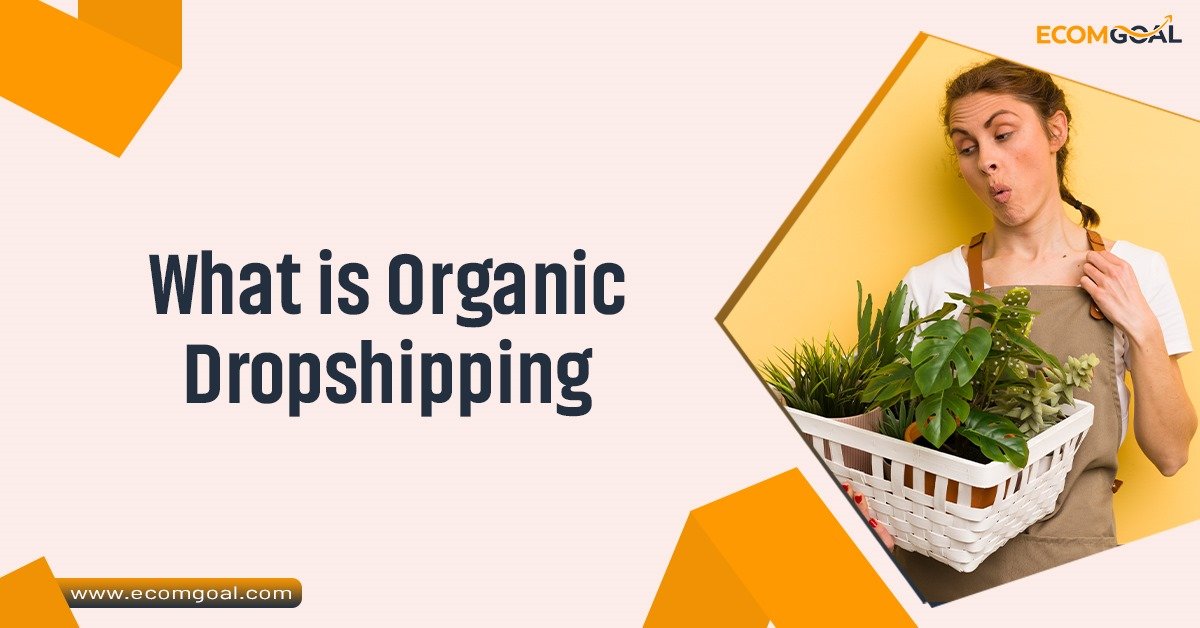
What is organic dropshipping? The digital age has revolutionized how we shop, with e-commerce leading the charge. Among various business models that have sprung up, dropshipping stands out as a popular and accessible way to start an online store. But what happens when you combine dropshipping with sustainability and a focus on natural products? That’s where organic dropshipping comes in. Let’s dive into what is organic dropshipping, how it works, and why it’s becoming a compelling choice for both entrepreneurs and environmentally conscious consumers.
Understanding What is Organic Dropshipping
Dropshipping is a retail fulfillment process where an online store doesn’t hold inventory. Instead, when a store sells a product, it purchases the item from a 3rd-party supplier who ships it directly to the customers. This model eliminates the need for warehousing and reduces the initial investment needed to start a business.
Key benefits of traditional dropshipping include:
- Low Startup Costs: No needs to buy inventory upfront.
- Flexibility: You can operate or handle from anywhere with an internet connection.
- Wide Product Range: You can offer a diverse catalog without the burden of stocking items.
However, traditional dropshipping oft focuses on low-cost, mass-produced items. While this can be profitable, it may not align with the values of today’s conscious consumers who prioritize quality, sustainability, and health.
The “Organic” Difference
Organic dropshipping is a niche within the dropshipping model that focuses on eco-friendly, natural, and organic products. These items are often produced sustainably, are free from harmful chemicals, and promote health and wellness.
Examples of organic dropshipping products include:
- Organic skincare and beauty products
- Natural cleaning supplies
- Eco-friendly home goods
- Sustainable fashion
- Organic foods and supplements
This model caters to a growing market of consumers who value ethical and environmentally responsible shopping practices. By offering products that meet these criteria, organic dropshippers can tap into a loyal customer base that’s willing to pay a premium for quality and sustainability.
How Organic Dropshipping Works
Organic dropshipping operates much like traditional dropshipping, with a few distinct differences due to the nature of the products. Here’s how it works:
- Choose a Niche: Begin by selecting a specific market within the organic product space. For instance, you might focus on organic baby products, zero-waste kitchen supplies, or vegan skincare.
- Find Suppliers: Partner with reputable suppliers who specialize in organic and eco-friendly products. It’s crucial to vet suppliers for certifications and sustainability practices to ensure product authenticity.
- Set Up Your Store: Create an e-commerce website or use platforms like Shopify, WooCommerce, or BigCommerce to showcase your products. Highlight the organic and eco-friendly aspects of your offerings to attract your target audience.
- Market Your Products: Use digital marketing strategies like social media advertising, influencer collaborations, and search engine optimization (SEO) to reach potential customers. Storytelling about the benefits of your organic products can resonate with conscious shoppers.
- Fulfill Orders: Once customers place an order, your supplier ships the products directly to them. Ensure seamless communication and customer service to build trust & satisfaction.
Benefits of Organic Dropshipping
Organic dropshipping offers unique advantages that set it apart from conventional e-commerce models:
- Appealing to Conscious Consumers: With the rise in awareness about environmental issues and health, organic products are in demand. By offering these items, you position your brand as a responsible and forward-thinking business.
- Lower Environmental Impact: Organic and sustainable products often have a smaller carbon footprint compared to their conventional counterparts. This aligns with the values of eco-conscious customers and supports global sustainability efforts.
- Higher Profit Margins: Organic products are often perceived as premium goods, allowing you to charge higher prices. Consumers are willing to pay more for quality and sustainability.
- Niche Authority: Focusing on a specific niche like organic products can help you stand out in the crowded e-commerce market. Building expertise in your niche strengthens your brand and fosters customer loyalty.
- Scalability: Like traditional dropshipping, organic dropshipping is highly scalable. You can expand your product catalog and market reach as your business grows.
Challenges of Organic Dropshipping
While organic dropshipping is a promising model, it’s not without challenges. Here are a few to consider:
- Higher Product Costs: Organic and sustainable products tend to cost more, which can affect your pricing strategy and competitiveness.
- Supplier Reliability: Ensuring consistent quality and timely deliveries can be challenging. Partnering with dependable suppliers is critical.
- Authenticity Verification: The rise in popularity of organic products has led to misleading claims. It’s essential to verify certifications and ensure the legitimacy of your supplier’s products.
- Market Education: Some consumers may not understand the value of organic products or why they cost more. Educating your audience through content marketing and transparent communication can address this.
- Shipping Impact: While organic products are eco-friendly, international shipping can increase your carbon footprint. Consider working with suppliers closer to your target market or offsetting emissions through sustainability programs.
Tips for Success in Organic Dropshipping
To thrive in the organic dropshipping space, follow these best practices:
- Prioritize Transparency: Be clear about your product’s origins, certifications, and benefits. Building trust with your customers is essential.
- Invest in Branding: Create a strong brand identity that reflects your commitment to sustainability and quality. This will help differentiate your business in a competitive market.
- Leverage Social Media: Platforms like Instagram and Pinterest are great for showcasing organic and eco-friendly products. Share visually appealing content and engage with your audience to build a community.
- Offer Value-Added Content: Create blogs, videos, and guides that educate your audience about organic living. This positions you as an authority in your niche and drives traffic to your store.
- Monitor Trends: Stay updated on trends in organic products and sustainability to adapt your offerings and marketing strategies accordingly.
Why Now is the Time for Organic Dropshipping
The global shift toward sustainability is transforming consumer behavior. According to studies, the organic market is growing rapidly, with consumers increasingly prioritizing products that are natural, eco-friendly, and ethically sourced. Organic dropshipping offers a unique opportunity to align with these trends while building a profitable business.
As environmental concerns and health awareness continue to rise, the demand for organic products is unlikely to slow down. Entrepreneurs who recognize this and act now can position themselves as leaders in the space.
Conclusion
Organic dropshipping combines the convenience and accessibility of dropshipping with the values of sustainability and wellness. By offering eco-friendly, organic products, businesses can cater to a growing market of conscious consumers while contributing to a healthier planet. Though challenges exist, with the right strategies and commitment, organic dropshipping can be a rewarding and impactful business model. Whether you’re a seasoned entrepreneur or just starting, exploring this niche could be your next big step in the e-commerce world.

Hello, I am an E-commerce Expert with extensive experience providing services to numerous e-commerce brands and individuals since 2017. My primary areas of expertise include the Amazon, Walmart, and Shopify marketplaces. Linkedin
